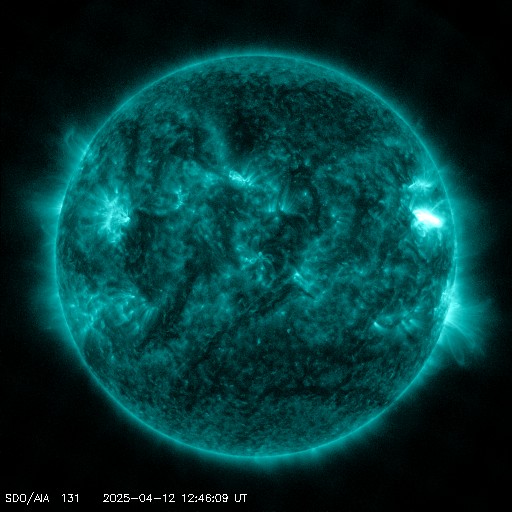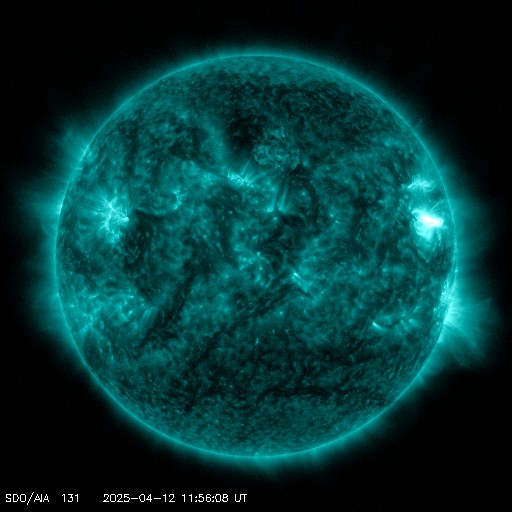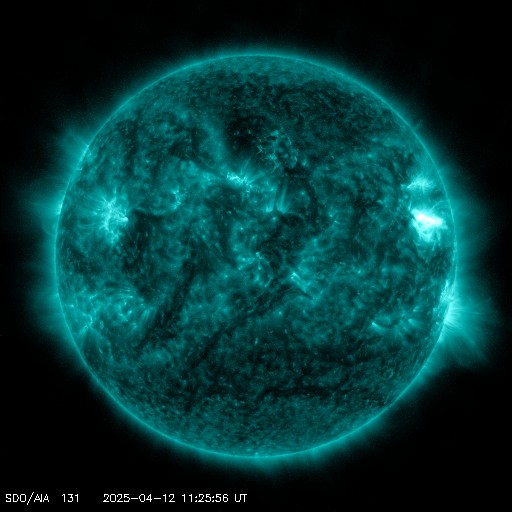Viewing archive of Saturday, 29 September 2001
Solar activity report
Any mentioned solar flare in this report has a scaling factor applied by the Space Weather Prediction Center (SWPC). Because of the SWPC scaling factor, solar flares are reported as 42% smaller than for the science quality data. The scaling factor has been removed from our archived solar flare data to reflect the true physical units.
Report of Solar-Geophysical Activity 2001 Sep 29 2200 UTCPrepared by the NOAA © SWPC and processed by SpaceWeatherLive.com
Joint USAF/NOAA Report of Solar and Geophysical Activity
SDF Number 272 Issued at 2200Z on 29 Sep 2001IA. Analysis of Solar Active Regions and Activity from 28-2100Z to 29-2100Z
Solar activity has been moderate. Two M1/1f flares
were observed -- the first at 28/2125 UTC from Region 9634 (N12W15),
and the second a long duration event at 29/1106 UTC from Region 9636
(N13W02). For the latter event, SOHO/LASCO imagery suggests an
associated faint halo with an earthward-directed component possible.
Region 9628 (S17W62), the largest on the visible disk, also
produced several optical flares with strong C-level enhancements
throughout the first half of the period. New Region 9642 (N03E70)
was numbered today.
IB. Solar Activity Forecast
Solar activity is expected to be
predominantly moderate over the next three days. Isolated major
flares are possible, particularly from Region 9628 and nearby Region
9632 (S18W48).
IIA. Geophysical Activity Summary 28-2100Z to 29-2100Z
Geomagnetic field activity has been quiet to active. A 17 nT sudden
impulse was observed on the Boulder magnetometer at 29/0940 UTC,
preceded by an earlier shock passage observed on the ACE satellite.
Several active periods occurred through the remainder of the day.
Solar wind speed remains elevated and IMF signatures suggest the
predominant influence of a coronal hole high speed stream. The
proton event which began on 25 September remains in progress but
continues to wane, with current 10MeV flux levels at about 25 pfu.
IIB. Geophysical Activity Forecast
The geomagnetic field is
expected to be predominantly active for the next two days, under the
combined influence of high speed stream effects and possible
transient shock passages from the CME activity of 28 September.
Isolated minor storm conditions may occur at higher latitudes during
this period. Today's CME activity may further result in additional
shock passage effects on day three. The proton event in progress is
expected to end within the next 24 to 36 hours, barring further
enhancement from any major flares.
III. Event Probabilities 30 Sep to 02 Oct
| Class M | 80% | 80% | 80% |
| Class X | 25% | 25% | 25% |
| Proton | 99% | 50% | 20% |
| PCAF | yellow | ||
IV. Penticton 10.7 cm Flux
Observed 29 Sep 240 Predicted 30 Sep-02 Oct 240/240/235 90 Day Mean 29 Sep 175
V. Geomagnetic A Indices
Observed Afr/Ap 28 Sep 010/013 Estimated Afr/Ap 29 Sep 015/020 Predicted Afr/Ap 30 Sep-02 Oct 020/030-020/020-018/018
VI. Geomagnetic Activity Probabilities 30 Sep to 02 Oct
| A. Middle Latitudes | |||
|---|---|---|---|
| Active | 30% | 30% | 25% |
| Minor storm | 15% | 15% | 10% |
| Major-severe storm | 10% | 10% | 10% |
| B. High Latitudes | |||
|---|---|---|---|
| Active | 35% | 35% | 30% |
| Minor storm | 20% | 20% | 15% |
| Major-severe storm | 15% | 10% | 10% |
All times in UTC
Current data suggests there is a slight possibility for aurora to appear at the following middle latitude regions in the near future
YakutskLatest news
Latest forum messages
May be of interest if you enjoy Solar Videography 2CME 20AR 4055 45Filaments and prominences 5May storm revisited 1
More topicsSupport SpaceWeatherLive.com!
A lot of people come to SpaceWeatherLive to follow the Sun's activity or if there is aurora to be seen, but with more traffic comes higher server costs. Consider a donation if you enjoy SpaceWeatherLive so we can keep the website online!

Space weather facts
| Last X-flare | 2025/03/28 | X1.1 |
| Last M-flare | 2025/04/12 | M2.3 |
| Last geomagnetic storm | 2025/04/06 | Kp5 (G1) |
| Spotless days | |
|---|---|
| Last spotless day | 2022/06/08 |
| Monthly mean Sunspot Number | |
|---|---|
| March 2025 | 134.2 -20.4 |
| April 2025 | 139.5 +5.3 |
| Last 30 days | 136.6 -3.5 |





